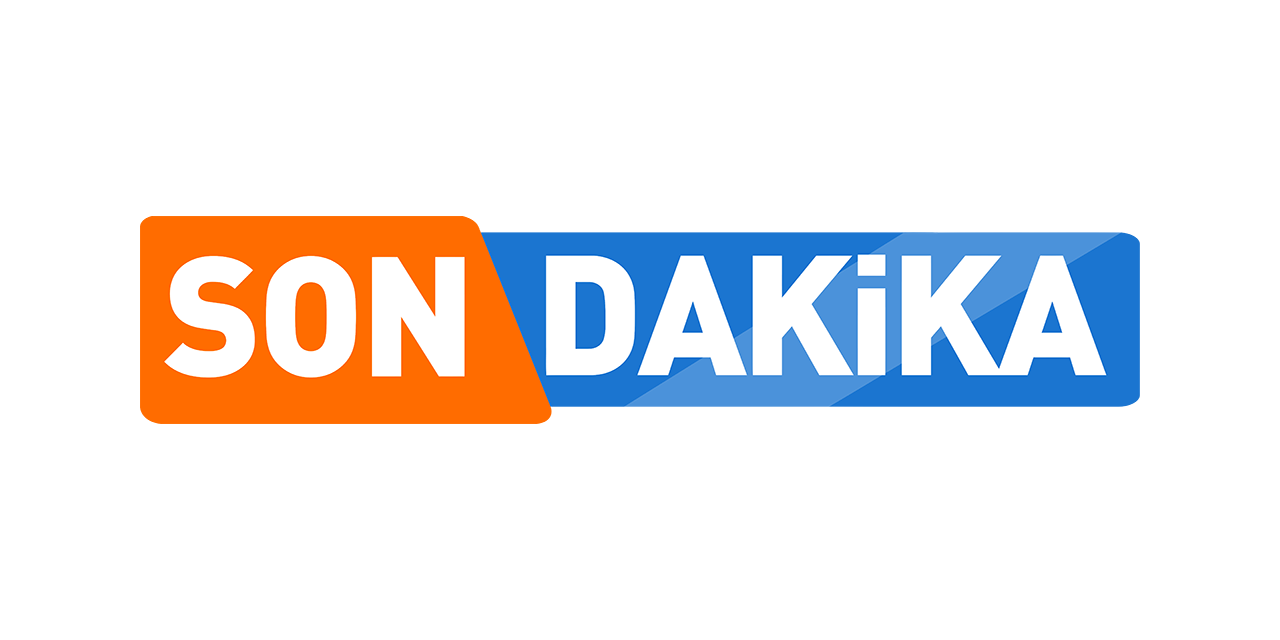Bigger fleet was supposed to improve Mokulele’s service to Moloka‘i. Lately, it’s become the problem : Maui Now
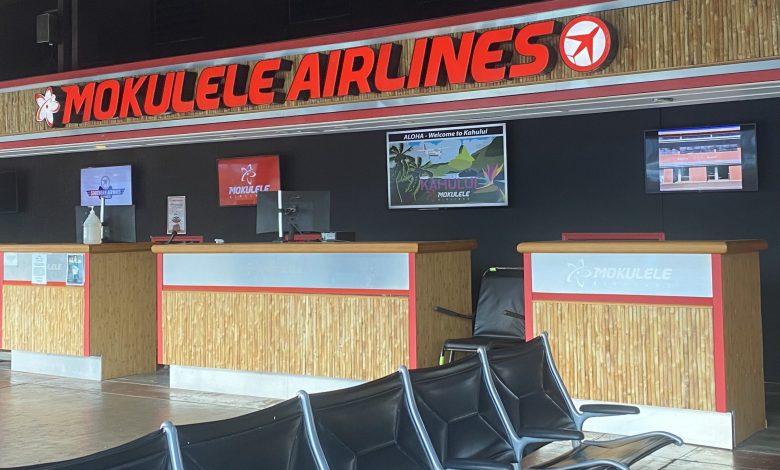
[ad_1]
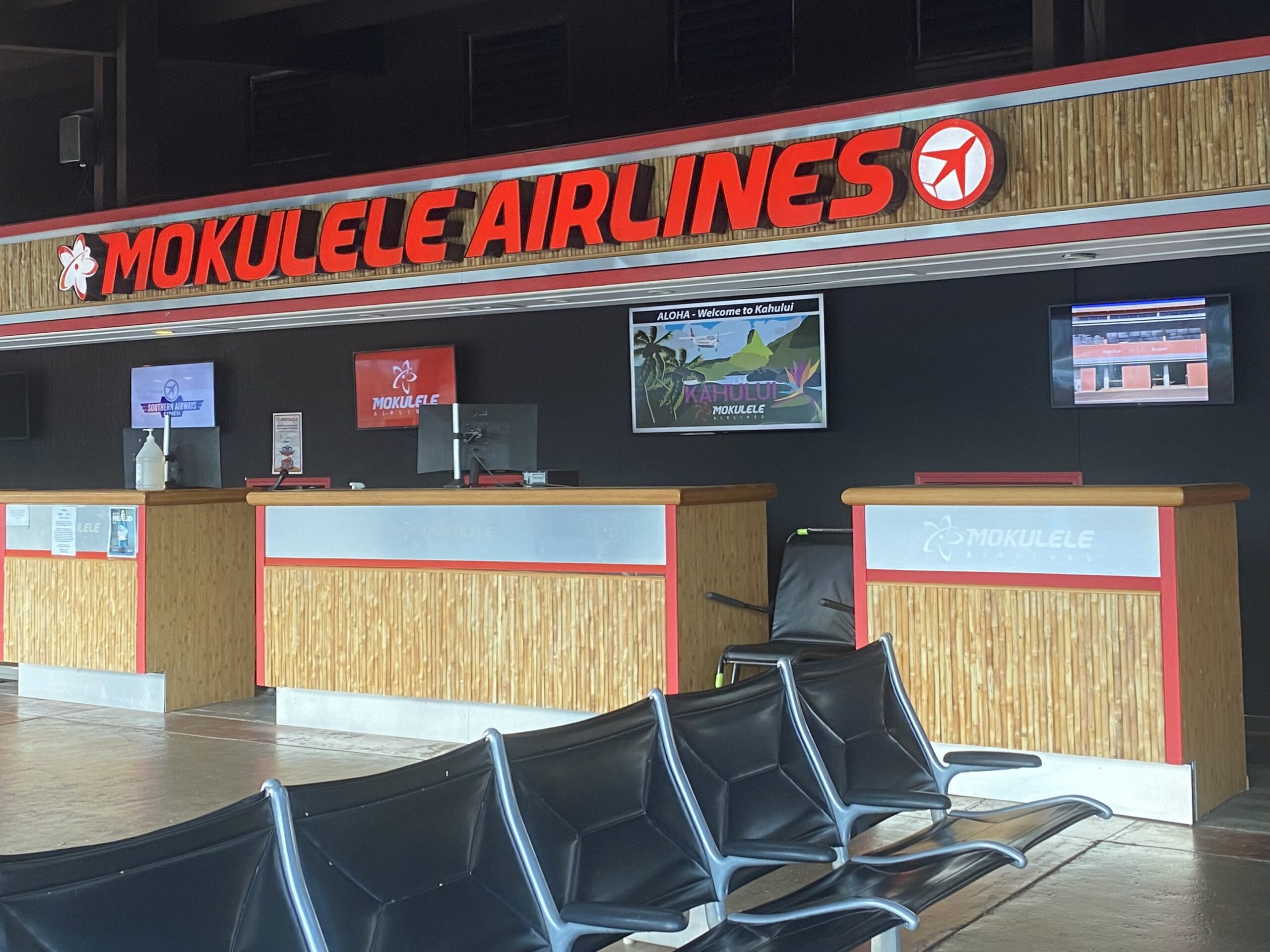
Yvonne Everhart and her husband gripped the boat railings as Randy Houser’s “How Country Feels” played over the speakers during a bumpy ride across the Pailolo Channel to their home on Moloka‘i on Sunday.
The couple’s last leg of a return trip from Oregon, where they attended their granddaughter’s wedding, was supposed to be a short flight from Maui to Moloka‘i on Mokulele Airlines. But Mokulele, the only passenger carrier servicing the small island, had cancelled their flight and had no other availability for three days.
“It was a relief to get on that boat and not have to fly Mokulele again,” Yvonne Everhart said.
The Everharts, who also went through a travel “nightmare” going to Portland due to a three-hour delay of another Mokulele flight, were fortunate to have friends who helped them find a boat captain willing to take them and another displaced passenger from Māla Wharf in Lahaina to Kamalō Harbor on Moloka‘i’s east end.
But their ordeal illustrates the longtime issues that Moloka‘i residents, and people who work on the island, have had with delays and cancellations by Mokulele.
And the problems have only gotten worse following a chain of events that include the temporary grounding of a portion of Mokulele’s fleet over the weekend, the indefinite grounding last month of one of the larger-capacity Saabs that was brought in specifically to improve service on Moloka‘i and Lāna‘i and the finding earlier this year that other aircraft that were supposed to provide backup service aren’t a good fit for the islands.
“Your frustration is completely valid, and we are sorry for letting you down,” Louis Saint-Cyr, Mokulele Airlines’ new president of Hawai‘i operations, wrote in a letter to the community that was shared on social media last week.
“Mokulele Airlines takes seriously our responsibility to get you where you need to go safely and efficiently. … The primary cause of the Mokulele flight disruptions has been the grounding of our 28-seat Saab aircraft, which has reduced our capacity in the Hawai’i network. Despite our best efforts, we’ve been unable to secure a replacement engine, extending this challenging situation.”
SAABS IN SHORT SUPPLY
The 28-seater Saab 340 aircraft arrived in late summer 2022 and early 2023, promising to provide more carrying capacity for a fleet that relies mainly on nine-seater Cessna Caravans.
According to Mokulele Chief of Staff Keith Sisson, the Saabs were among the few aircraft that could land at Ho‘olehua Airport, where the longest runway is 4,494 feet (by comparison, Kahului Airport’s longest runway is nearly 7,000 feet). Even then, at times, Mokulele had to reduce capacity by eight to 10 passengers on takeoff from Ho‘olehua depending on the total weight of the passengers, crew and cargo, Sisson said.
But shortly after arriving, the two Saabs were temporarily sidelined after one was damaged by ground equipment and the other underwent inspection, leading to delays during the busy spring travel season. At the time, Mokulele announced it would invest $10 million in additional aircraft, including a third Saab 340.
In early July, one of the Saab aircraft was grounded again when the engine reached the end of its life cycle, Sisson said. The Saab had operated three to four round trips daily, mostly between Honolulu and Moloka‘i.
“Finding a replacement engine has been challenging,” Sisson said via email on Friday. “Replacement parts are scarce due to limited global use of this aircraft type. Timeline for return to service is uncertain.”
Production on the Saab 340 ended in 1999, according to the company. These models now “are used for specific purposes like shorter flights, so there are not a great number of them flying throughout the country,” Sisson explained.
Marvin Moniz, the state Department of Transportation’s Maui airports branch manager, said Mokulele is not the only airline that uses out-of-production aircraft.
“As far as parts go, it’s like your car, yeah? If you get one ‘62 Toyota you still can get parts, it just gets harder to get,” Moniz said. “It’s not uncommon for airlines around the country to fly aircraft that’s not manufactured as far as the aircraft go but parts are still being made.”
Mokulele also grounded part of its fleet over the weekend due to “potential discrepancies in the documentation of a recent landing gear servicing on one of our aircraft,” Saint-Cyr said in a letter to customers on Saturday. Saint-Cyr said the airline temporarily grounded affected aircraft for inspections as a “precautionary step.” He told HJI that the documentation issues were resolved and operations resumed on Tuesday evening.
The airline had planned to add three nine-seater Tecnam Travellers — which are still in production — as reserve aircraft that could be deployed “almost immediately,” the company said last year. Those aircraft are sitting in Honolulu, but Mokulele has decided that “they are not adequate for operating service in Hawai‘i” because of their limited luggage capacity, low payload and pricier fuel, which would raise ticket prices, Sisson explained via phone on Friday. The airline said in May that it planned to sell some of the Tecnams.
“We brought them here and it’s been determined that they’re just not the right aircraft for the market,” Sisson said.
MOUNTING DELAYS
The disruptions to the airline’s service are especially problematic when there are no alternatives to fly for people who live and work on an island.
Maui County Council Member Keani Rawlins-Fernandez, who lives on Moloka‘i, missed a meeting and her son’s football scrimmage when her Mokulele flight from Honolulu to Ho‘olehua — the primary route serviced by the Saab — was delayed. She booked a flight to Maui with Hawaiian Airlines instead.
“Even though you plan for buffers, when planes go down, you just suffer,” Rawlins-Fernandez said Thursday. “But for me, because this was a work trip, I had the ability to get on a Hawaiian Airlines flight to Maui to try to get home. But most people, they’re not going to be able to pay for an additional flight to try to get home, so they’re going to wait.”
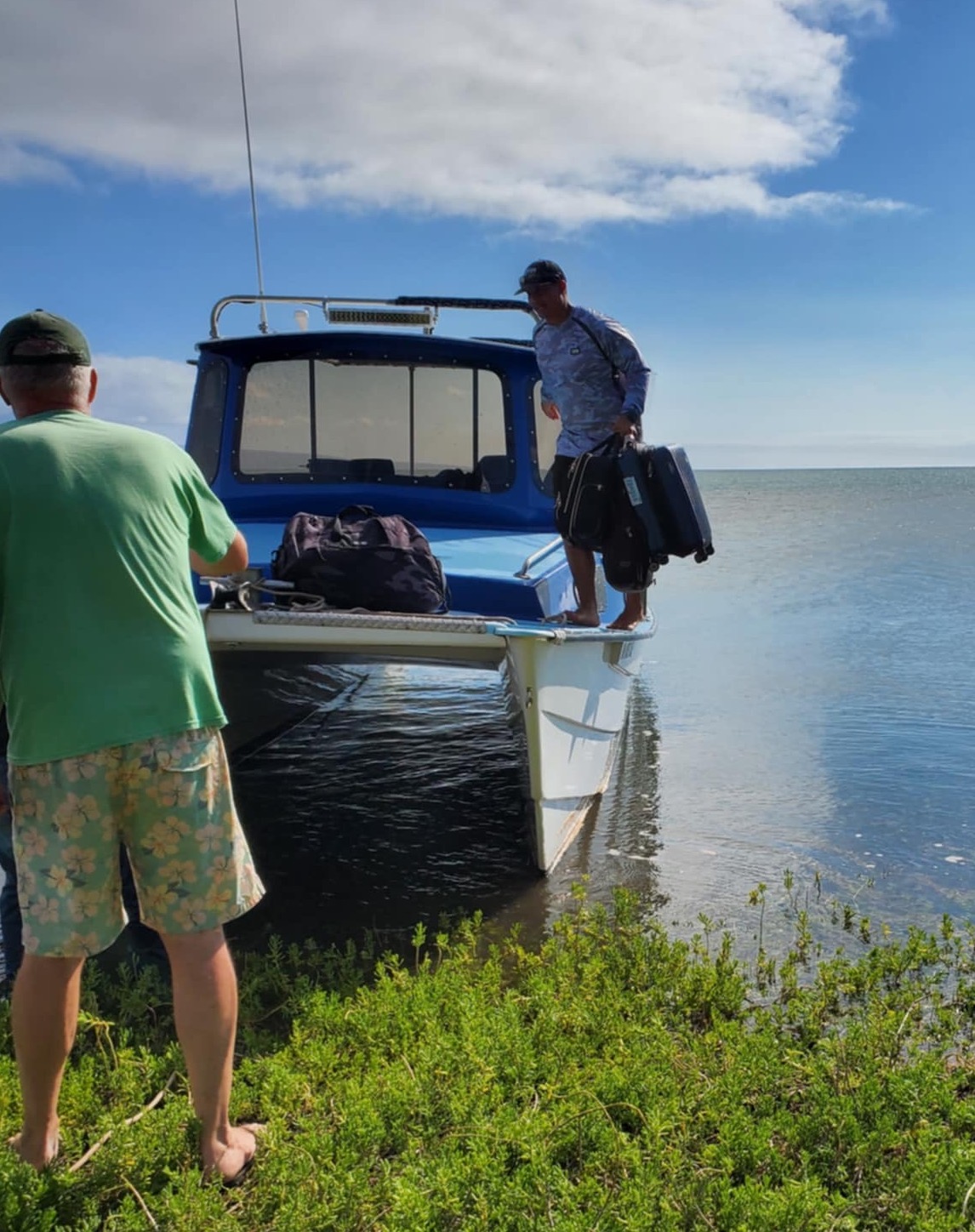
For schools and organizations that send large groups between the islands, flying is the only feasible way since the Moloka‘i ferry ended service years ago.
Earlier this month, Maui Economic Opportunity needed to send mechanics to Moloka‘i, where its buses are the only wheelchair-accessible public buses on the island and provide crucial door-to-door services to medical appointments and grocery shopping, MEO Moloka‘i Branch Manager Mahie McPherson said.
“The lack of flight availability, consistent delays, and sudden cancellations has been an ongoing issue experienced by our Molokai community, affecting all aspects of our lives,” McPherson said in a statement on Monday.
When MEO looked for Maui-to-Moloka‘i flights at the beginning of August for its bus mechanics and Head Start staff, it found the entire month was booked, which CEO Debbie Cabebe said was “unusual” for the nonprofit that regularly sends its staff interisland.
MEO settled for flights in September, but when the shop manager expressed an urgent need for bus repairs a week later, staff checked the Mokulele website again and were able to book flights for August, Cabebe said.
Mokulele’s Saab aircraft were also supposed to carry the Moloka‘i High School football team to games on Maui in its first season in 11-player football. But Moloka‘i Athletic Director Lee DeRouin said Monday that the grounding of the larger planes “hasn’t had a direct impact on Moloka’i athletics because most of our travel is with nine-seat Caravan planes.”
Until the Saab is back in service, the football team will fly on the nine-seater. The school also has cross country, air riflery, volleyball and a cheerleading and dance team on its fall sports calendar, and DeRouin said they have the travel schedule covered with the Caravans.
“Yes, we’ve had some delays over the past year and a half, but they do a nice job of putting the kids first, trying to get our coaches and student-athletes home in a timely manner because of the situations, whether it’s weather or mechanical,” DeRouin said.
THE PLAN? STICK TO THE ‘PROVEN’ CARAVANS
Mokulele’s solution is the same as it was in the past — more aircraft. In the letter that state Sen. Lynn DeCoite shared on Facebook last week, Saint-Cyr said the airline would be increasing its fleet of Cessna Caravans, reducing its Kona flights to ensure service for Moloka‘i and Lāna‘i and rebuilding its schedule for September and beyond.
Saint-Cyr, the former vice president of Hawaiian Airlines, was appointed on July 1 to oversee Mokulele after its parent company, Southern Airways, was acquired by Surf Air Mobility in July 2023.
“As I step into this role, I’m fully committed to improving our service and strengthening our relationships within the communities we serve,” Saint-Cyr said. “I bring with me years of experience in the Hawaiian market, and I’m confident we can restore flight service to the levels you deserve.”
Mokulele services nine airports across the state, including six in Maui Nui, and was recently chosen to provide essential air service to Lāna‘i for a two-year term with a subsidy of about $4 million each year.
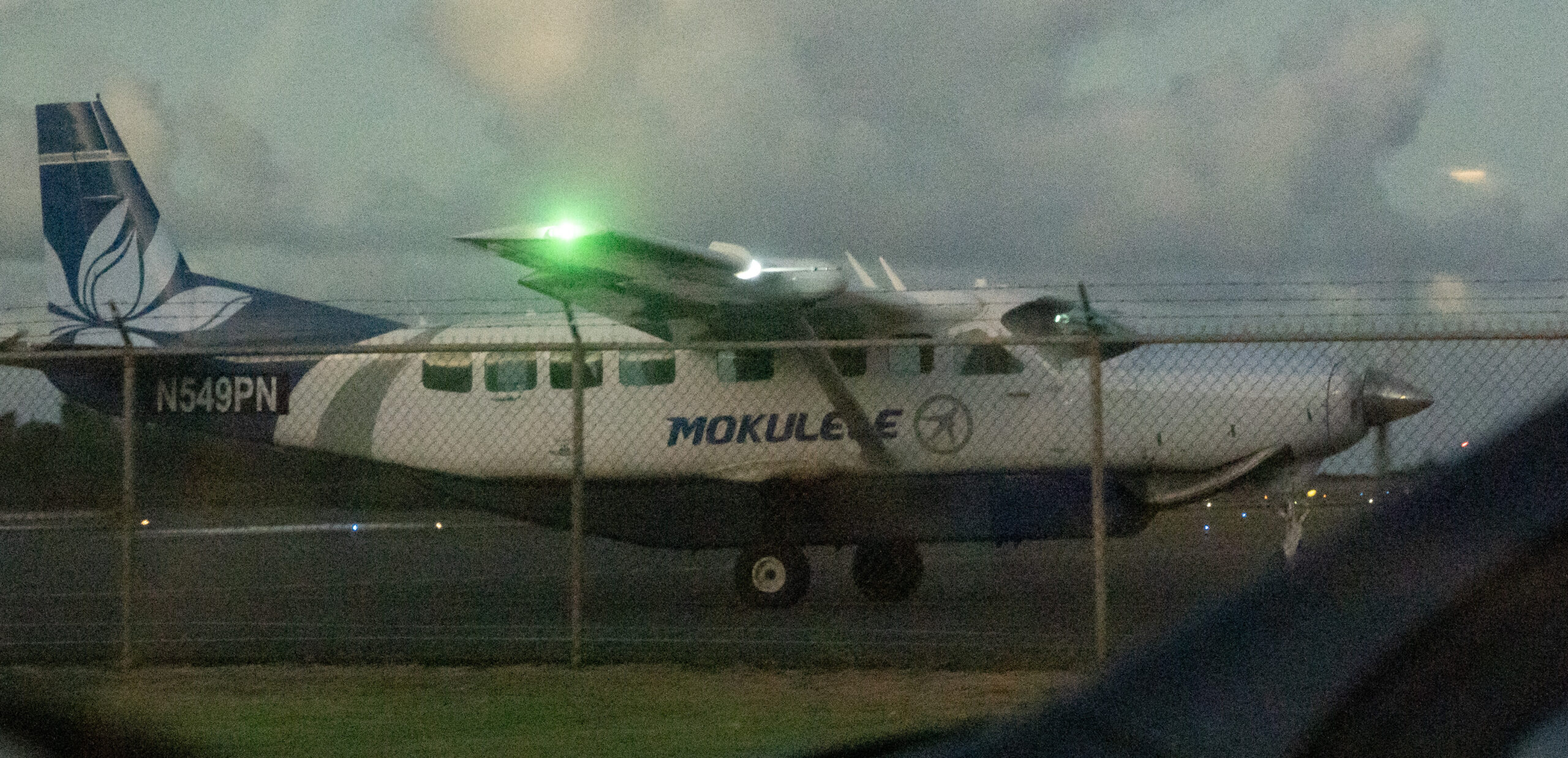
Neither Sisson nor Saint-Cyr directly addressed questions as to how many planes Mokulele currently has and how many were grounded over the weekend, noting only that “fleet size fluctuates daily,” according to Sisson. He added that the airline expects to get two more Cessna Caravans within 60 days. An undated post on the airline’s website says it has a fleet of 11 208EX Grand Caravans.
When asked if Mokulele would consider other aircraft that could land on the Moloka’i runway and are still in production, given the issue with finding parts for the Saabs, Sisson said: “I think the answer is more Caravans. … We know that they work there. They’re proven.”
“We’re not saying the Saab’s never coming back. … We’re just saying that we’re not looking for a replacement aircraft for the Saab and we do have more Caravans on the way,” Sisson added.
Since March, Everhart said she has had seven departure time changes with Mokulele, but the apology from Mokulele’s new leadership gives her hope that change might be coming.
“Not only have the residents of Moloka‘i suffered, but Mokulele pilots and staff have as well,” she said via Facebook Messenger during her layover in Seattle on Thursday night. “We still need a second airline to compete with Mokulele.”
